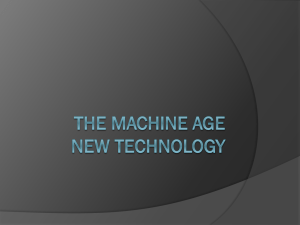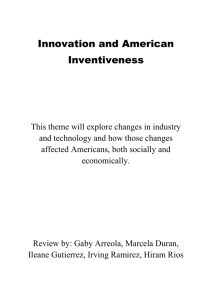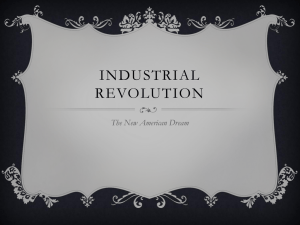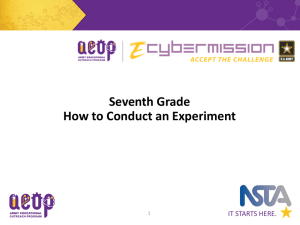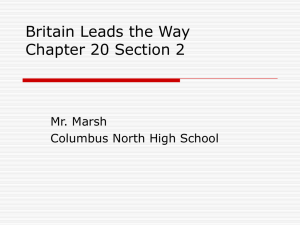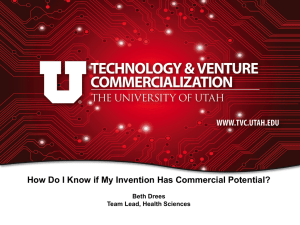5ca320e77ce569e659bd9c4151e38d20
advertisement
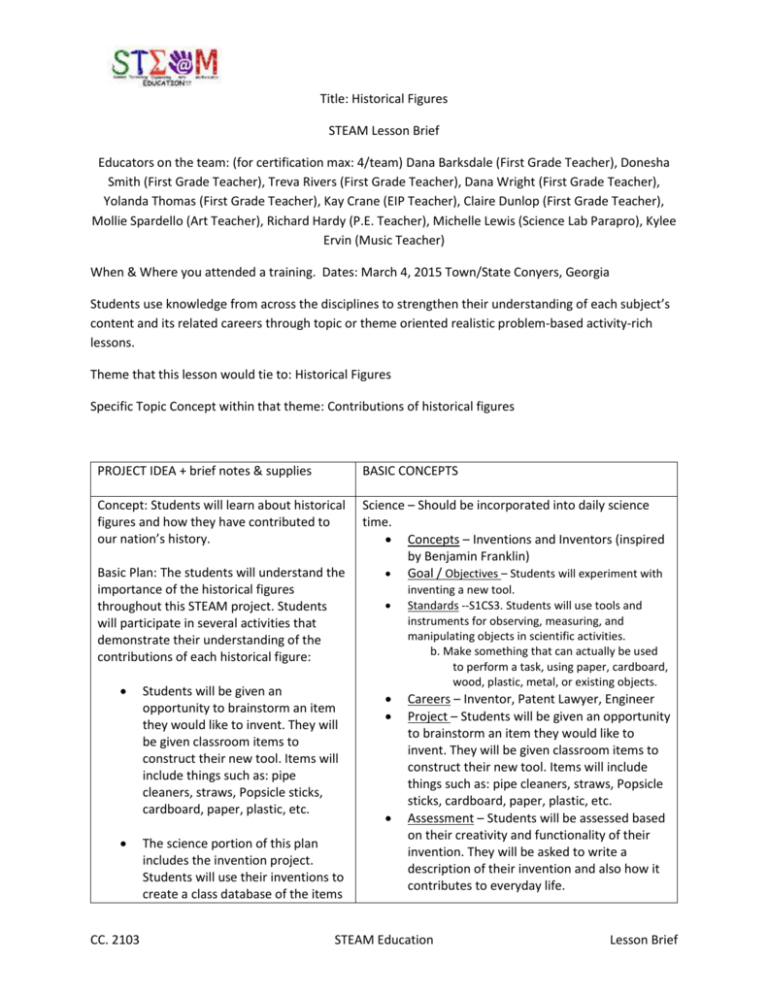
Title: Historical Figures STEAM Lesson Brief Educators on the team: (for certification max: 4/team) Dana Barksdale (First Grade Teacher), Donesha Smith (First Grade Teacher), Treva Rivers (First Grade Teacher), Dana Wright (First Grade Teacher), Yolanda Thomas (First Grade Teacher), Kay Crane (EIP Teacher), Claire Dunlop (First Grade Teacher), Mollie Spardello (Art Teacher), Richard Hardy (P.E. Teacher), Michelle Lewis (Science Lab Parapro), Kylee Ervin (Music Teacher) When & Where you attended a training. Dates: March 4, 2015 Town/State Conyers, Georgia Students use knowledge from across the disciplines to strengthen their understanding of each subject’s content and its related careers through topic or theme oriented realistic problem-based activity-rich lessons. Theme that this lesson would tie to: Historical Figures Specific Topic Concept within that theme: Contributions of historical figures PROJECT IDEA + brief notes & supplies BASIC CONCEPTS Concept: Students will learn about historical figures and how they have contributed to our nation’s history. Science – Should be incorporated into daily science time. Concepts – Inventions and Inventors (inspired by Benjamin Franklin) Goal / Objectives – Students will experiment with Basic Plan: The students will understand the importance of the historical figures throughout this STEAM project. Students will participate in several activities that demonstrate their understanding of the contributions of each historical figure: CC. 2103 Students will be given an opportunity to brainstorm an item they would like to invent. They will be given classroom items to construct their new tool. Items will include things such as: pipe cleaners, straws, Popsicle sticks, cardboard, paper, plastic, etc. The science portion of this plan includes the invention project. Students will use their inventions to create a class database of the items inventing a new tool. Standards --S1CS3. Students will use tools and instruments for observing, measuring, and manipulating objects in scientific activities. b. Make something that can actually be used to perform a task, using paper, cardboard, wood, plastic, metal, or existing objects. Careers – Inventor, Patent Lawyer, Engineer Project – Students will be given an opportunity to brainstorm an item they would like to invent. They will be given classroom items to construct their new tool. Items will include things such as: pipe cleaners, straws, Popsicle sticks, cardboard, paper, plastic, etc. Assessment – Students will be assessed based on their creativity and functionality of their invention. They will be asked to write a description of their invention and also how it contributes to everyday life. STEAM Education Lesson Brief that were used in their inventions. A tally chart will mark the number of each item that was used. Students will create a graph representing the appropriate amounts of items used, and they will analyze the data to see which items were most used and least used. The students will create a display board on a chosen historical figure (Benjamin Franklin, Harriet Tubman, Thomas Jefferson, Lewis, Clark, & Sacagawea, George Washington Carver). They will need to write a narrative about their lifetime achievements and how they influenced America’s history. Students will pick a historical figure from the standard above. The students will design a tri-fold board displaying information researched about their chosen historical figure. They will present their projects to the class to show the information they learned while conducting their research. Their projects will be displayed as a museum in the cafeteria for the school to see. Skill level (Grade Range): Grade 1 Timing of Lesson: 40 minutes each day, five days a week for nine weeks. Basic Supplies: All Subjects: pipe cleaners, straws, popsicle sticks, cardboard, paper, plastic, display board, pre printed graph Other Resources: Internet CC. 2103 Extension – Students can research how their invention would have helped a historical figure in their lifetime (e.g., if student “invented” flying shoes, they would have to explain how those would benefit Harriet Tubman) Technology & Engineering – Concepts – Inventions and Inventors (inspired by Benjamin Franklin) Goal / Objectives – Students will experiment with inventing a new tool. Standards --S1CS3. Students will use tools and instruments for observing, measuring, and manipulating objects in scientific activities. b. Make something that can actually be used to perform a task, using paper, cardboard, wood, plastic, metal, or existing objects. Careers – Inventor, Patent Lawyer, Engineer Project – Students will be given an opportunity to brainstorm an item they would like to invent. They will be given classroom items to construct their new tool. Items will include things such as: pipe cleaners, straws, Popsicle sticks, cardboard, paper, plastic, etc. Assessment – Students will be assessed based on their creativity and functionality of their invention. They will be asked to write a description of their invention and also how it contributes to everyday life. Extension – Students can use items found at home to enhance or recreate their invention made in class. They can teach a family member how to reproduce their invention. Math – Concepts – Graphing Goal / Objectives – Students will use graphing to analyze the amounts of each classroom item that was used in their inventions. Standards – 1.MD.4 Organize, represent, and interpret data with up to three categories; ask and answer questions about the total number of data points, how many in each category, and how many more or less are in one category than in another. Careers – Statistician, logistics manager Project – The science portion of this plan includes the invention project. Students will STEAM Education Lesson Brief Photos: LA – use their inventions to create a class database of the items that were used in their inventions. A tally chart will mark the number of each item that was used. Students will create a graph representing the appropriate amounts of items used, and they will analyze the data to see which items were most used and least used. Assessment – Students will be assessed on their ability to answer questions regarding the graph. The questions can include: “How many more _____ were used than _____?” or “How many fewer ____ were used than _____?” Extension – Students can research the cost of the actual items needed to create their invention. They will determine a reasonable estimate for the entire cost of their invention. Concepts –Writing Piece on Display Board Goal / Objectives – Students will write a narrative piece to be included on the story board regarding the historical figure of their choice. Standards – ELACCW1 Write narratives in which they recount two or more appropriately sequenced events, include some details regarding what happened, use temporal words to signal event order, and provide some sense of closure. CC. 2103 Careers – journalist, biographer, novelist Project – The students will create a display board on a chosen historical figure (Benjamin Franklin, Harriet Tubman, Thomas Jefferson, Lewis, Clark, & Sacagawea, George Washington Carver). They will need to write a narrative about their lifetime achievements and how they influenced America’s history. Assessment – Students will be assessed on their ability to describe the accomplishments of their historical figure. Their writing will need to include contributions to society and how they influenced our lives today. Extension – Students can complete a Venn diagram and construct a writing piece comparing and contrasting their life to their historical figure’s life. STEAM Education Lesson Brief SS – Art – CC. 2103 Concepts – Story Board Presentation Goal / Objectives – Students will create a story board displaying the life of a chosen historical figure Standards – SS1H1 The student will read about and describe the life of historical figures in American history. a. Identify the contributions made by these figures: Benjamin Franklin (inventor/author/ statesman), Thomas Jefferson (Declaration of Independence), Meriwether Lewis and William Clark with Sacagawea (exploration), Harriet Tubman (Underground Railroad), Theodore Roosevelt (National Parks and the environment), George Washington Carver (science). Careers – Biographer, Historian, Curator Project – Students will pick a historical figure from the standard above. The students will design a trifold board displaying information researched about their chosen historical figure. They will present their projects to the class to show the information they learned while conducting their research. Their projects will be displayed as a museum in the cafeteria for the school to see. Assessment – Students will be assessed on their ability to include pertinent information regarding their historical figure’s life and their contributions. Extension – Students can try to discover if an actual museum or monument exists in honor of the person they chose. They can present their findings to the class. Concepts – historical figures, puppetry Goal / Objectives – Students will create a historical figure puppet with at least one moving part. Standards – VA1MC.1 engages in the creative process to generate and visualize ideas. VA1PR.1d Makes choices in developing art compositions. VA1PR3d Creates 3-dimensional composition using traditional and/or contemporary craft materials and methods. Careers – puppeteer, sculptor Project – Students will use their knowledge of historical figures to plan and design a puppet from paper and found objects. Students will explore ways to manipulate the materials to STEAM Education Lesson Brief PE – create a movable part (i.e – mouth, art, leg, etc) in their puppet. Assessment – Student puppet represents a historical figure and has a moveable part. Extension – Concepts – Recognizing contributions to sports by famous historical figures. Participating in activities that reflect the athlete’s role in sports. Goal / Objectives – Students will participate in challenging activities which represent the variety of sports influenced by the historical figures researched for their projects. Standards – PE1.6 Values physical activity for health, enjoyment, challenge, self-expression and or social interaction. Careers – Professional Baseball Player, Professional Hockey Player, Professional Basketball Player, Professional Athlete. Professional Coach. Project – Students will participate in a rotation of athletic challenges which reflect the sports influenced by the historical figures. In honor of Babe Ruth, students will hit a wiffle ball from a tee and understand the positions of the baseball players. In honor of Michael Jordan, students will practice basketball shots and understand the role of a team player. In honor of Wayne Gretzky, students will play hockey and understand the rules of safety. Assessment – Observation of student participation and understanding of the influence the athletes made for future sports. Extension – Students research additional famous athletes and their contributions to sports. Students will teach other students how to play the games or model the proper behavior for participating in other sport challenges. Music – Concepts – Composing Goal / Objectives – Students will write a song or jingle about their historical figure to accompany their big project. CC. 2103 STEAM Education Lesson Brief CC. 2103 Standards – MU:Cr1.1.1a With limited guidance, create musical ideas (such as answering a musical question) for a specific purpose. MU:Cr2.1.1b With limited guidance, use iconic or standard notation and/or recording technology to document and organize personal musical ideas. MU:Pr4.2.1a With limited guidance, demonstrate knowledge of music concepts (such as beat and melodic contour) in music from a variety of cultures selected for performance. Careers – Composer, Musician Project – Students will study their historical figures and do a word splash brainstorming activity. With the word splash, students can begin to write the lyrics and adding the melody last. Assessment – Students will be informally assessed on their composition and performance of their jingle. Extension – Students can add instruments to their song. STEAM Education Lesson Brief


